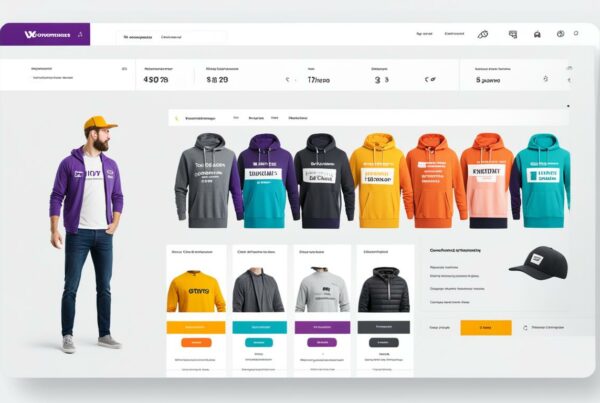For an eCommerce business, looking at your Google Analytics data and seeing where your customers are dropping off in your shop is never a good sign.
If you are an eCommerce business and you are reading this then it might be reassuring to know that you are not alone. In fact, recent research demonstrates that almost 70% of people will abandon their shopping cart. On a mobile phone, the cart abandonment can be even higher. If 7 in every 10 customers are not fully completing their transaction and you are losing money in the process, what can we do to prevent them from walking away?
We are going to address what we believe are the 10 key areas that could help combat the dreaded shopping cart abandonment.
1) We buy from brands we trust
An abandoned cart sends a clear and distinct message to businesses that something isn’t quite right. Perhaps the unique selling proposition is being rejected but more concerningly, could it be that there is a lack of trust in your brand?
You have to demonstrate to your customer that their information is secure. A great way to do this is to display trusted and reputable logos such as PayPal or World Pay.
One way we ensure our clients have trusted sites is making sure they hold a valid SSL certificate on every page. Your customers will trust their sensitive information is safe and they are more committed to spending time on your website and completing a transaction.
2) Design and deliver shopping cart abandonment emails
Its perfectly legal before you ask.
As long as you have explicit consent from the customer to receive those abandoned card emails, there is no legal infringement on GDPR.
If someone has abandoned their cart towards the end of the transaction, there is every chance you have captured their details. Do not underestimate the importance of this data so that you can appropriately email them once they have abandoned the cart.
A good way to do this is set up a series of autoresponder emails to notify your customers immediately that they left items in their cart. You can follow this up with 1 or 2 additional emails spread out over the next 24 hours. A total of 3 emails is optimum and ideally you want to do this when the customer is engaged with the product.
When you send the emails, make sure you show them the products that they left behind with a call-to-action prompting them to complete the transaction.
3) Time to launch the remarketing and retargeting
Remarketing and retargeting are the ability to chase your potential customers across the internet.
Technically, retargeting is a subset or example of remarketing.
Remarketing to recover potential customers is a powerful tool and it can really drive a high return on investment for your business. It can also be more affordable than your standard price per click ‘PPC’ advertising. A Facebook tracking pixel placed on your site can capture visitor behaviour and store data while attaching a cookie to the visitor.
Retargeting is specifically geared to online behaviour, and is concerned with PPC and display ads, using cookie and display ads. It helps users find their way back to your site, once they have visited, but also identifies potential customers by analysing their online behaviour to predict their interests – it can even spot users browsing your competitor’s site and lead them to yours! So, it also leads warm leads to your website for the first time.
4) Simplify the Process
What motivates people to buy is often through emotion. As people, we are different but our brains are prone to react in a similar manner. We have to get the customer first to want to buy from us and then we have to get them to act on that want. What if they can’t navigate the shop? Well then, the 1 in 7 walk-away rate could become higher and you could be losing money. 25% of shoppers abandon the cart purely because of complex navigation and finding the experience displeasing and none user-friendly.
The eCommerce site should be kept clean and simple. We say 3 stages of click through is optimum before they get to the checkout stage.
We need to keep the process of navigation as simplified as we can for the customer and don’t complicate the process with lengthy product descriptions. By making the process easier for the customer, if they are genuinely interested in a product then they will be more persuaded to complete the transaction.
5) Ensure a guest check-out option is available
Our attention spans on sites is reducing all the time. With more and more sites added every day and access to information at the push of a button, we have to act fast and think like the customer.
They want the buying process to be quick and efficient so make it that way and don’t encourage them to complete a huge page of field box after field box because all the information you need will be captured at the shipping stage in any case. You might want to consider offering to save their information at the end for future orders. It is important that we consider GDPR on any data capture of course but we will take a look at this in another blog.
6) Add credibility to your products through testimonials and reviews
In a world where people are buying online all the time, they are now subjected to the downside of eCommerce; deliveries not turning up and product quality not being as it was described. This all contributes towards their trust towards a brand and their commitment to your company to make that purchase.
A solution to this could be to add customer testimonials or provide customer product reviews. It is easy to set up and will add credibility and reputation to your brand and associated products and services.
7) Review your selling proposition
If you are finding from your Google Analytics that certain products are not even being looked at let alone being purchased then maybe you need to consider what is driving this.
Customers want to establish if the product is a right fit for their wants and needs because when they see it online, they can’t touch or feel it so you have to clearly and concisely demonstrate to them why they should buy it.
Consider the features and benefits of the products and identify if they are promoting the product well with images that tell the true story. Consider adding videos or a carousel of images and make sure each image shows a high resolution.
8) Look at the Shipping Costs
The one thing we frequently come across is on our experience of building eCommerce shops and analysing data is that shipping costs continue to come as a surprise to customers.
Customers do not like them, plain and simple and they will avoid them at any opportunity. In fact, more than half of customers will leave a site empty handed leaving their baskets full because of the unexpected costs. It’s the shock factor of having to pay for something intangible that they can’t touch and feel.
We know not every business can justify free shipping and so we have to think creatively around the risk of customers abandoning their cart due to price sensitivity around shipping.
Look at researching and developing a shipping strategy and implement this within your shop.
We recommend trying and testing different methods of minimum spend to offer free shipping or absorbing the cost of shipping in some products where you can. Looking at price point and increasing average transactional value (ATV) can really help influence the end result.
Adding value instead of discount should also be considered. If you can drive your ATV up by offering a free gift with a minimum spend then this encourages loyalty and commitment to purchase.
9) Know your competitors
This shouldn’t come as a huge surprise but never underestimate the influence that cost has on a purchase. Price plays a huge part in determining your customers decisions.
Online sales are becoming more aggressive…
The expectation of a discount code is becoming too frequent. So much so that customers now wait to see if a discount will come through before they commit to buying.
Do you know who your competitors are? More importantly, are you researching the strategies they use to attract customers?
We recommend using research competitor’s tools to identify what your market competitors are offering.
10) Keep informed with the latest technologies
The speed of new technology is rapid and its important that you keep your eye on the ball with the latest developments around eCommerce technology. Make sure you speak to your website host to ensure you have the latest plugins available for your shop.
Make the time to read and discover new emerging trends and always be one step ahead of your customer.
Technology helps you provide your customers with a better service and keeps you ahead of competitors. It’s important to stay up to date on the latest trends so your business does not fall behind or miss any opportunities.
Internet Creation Ltd. specialises in Web Design & Development, Graphics Design and Digital Marketing (SEO & PPC). For more information on how we can help your business, email [email protected].





